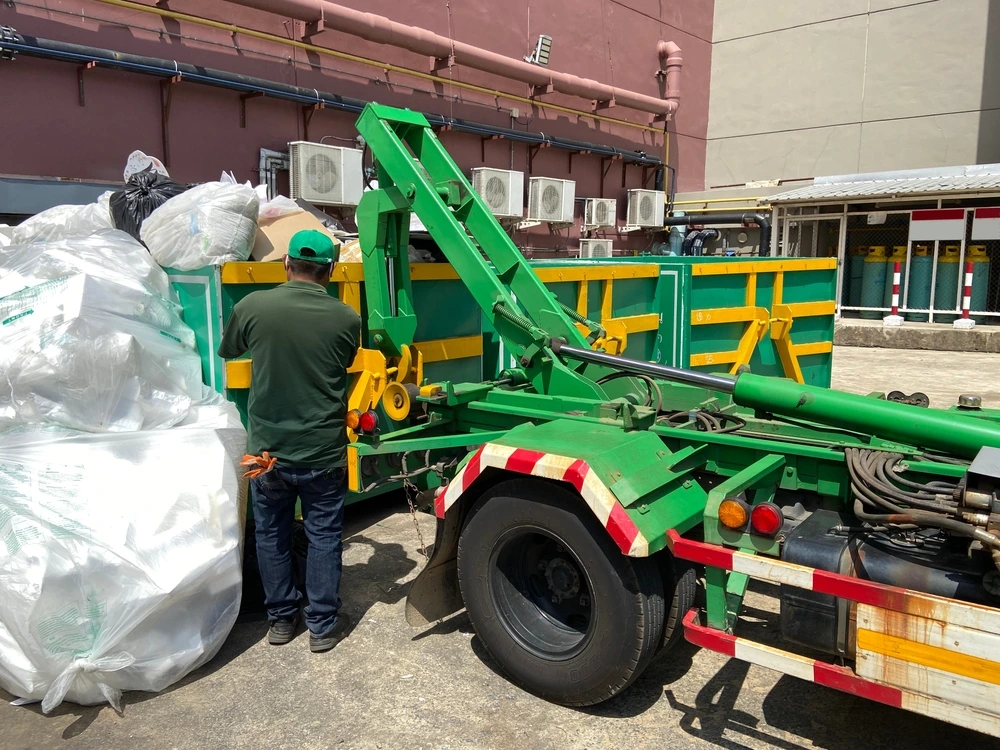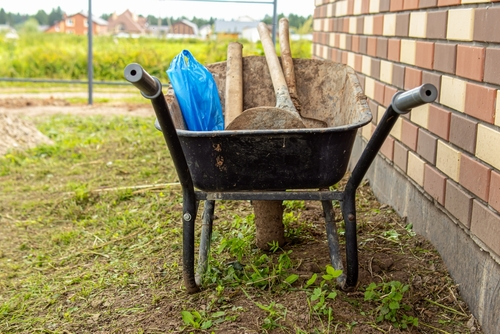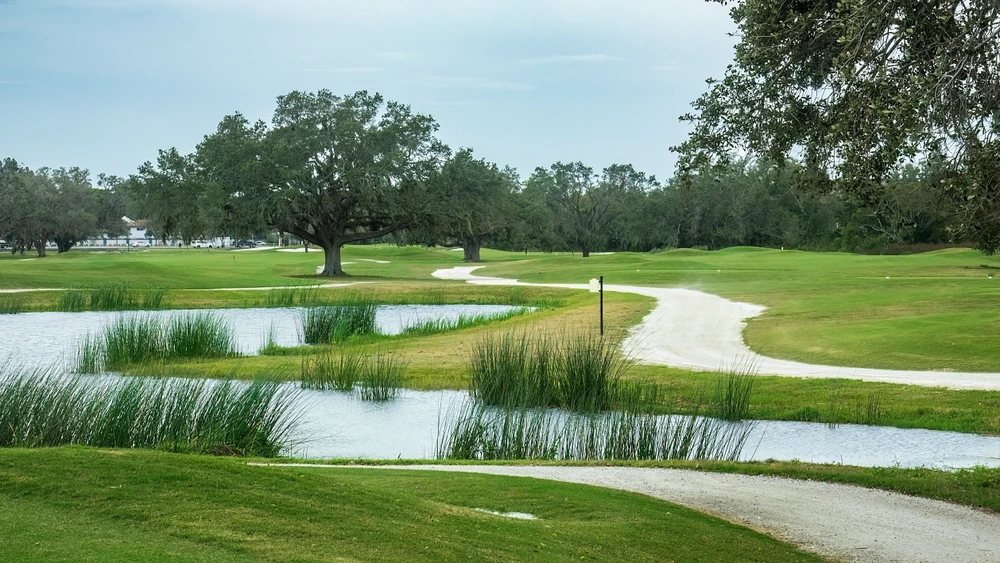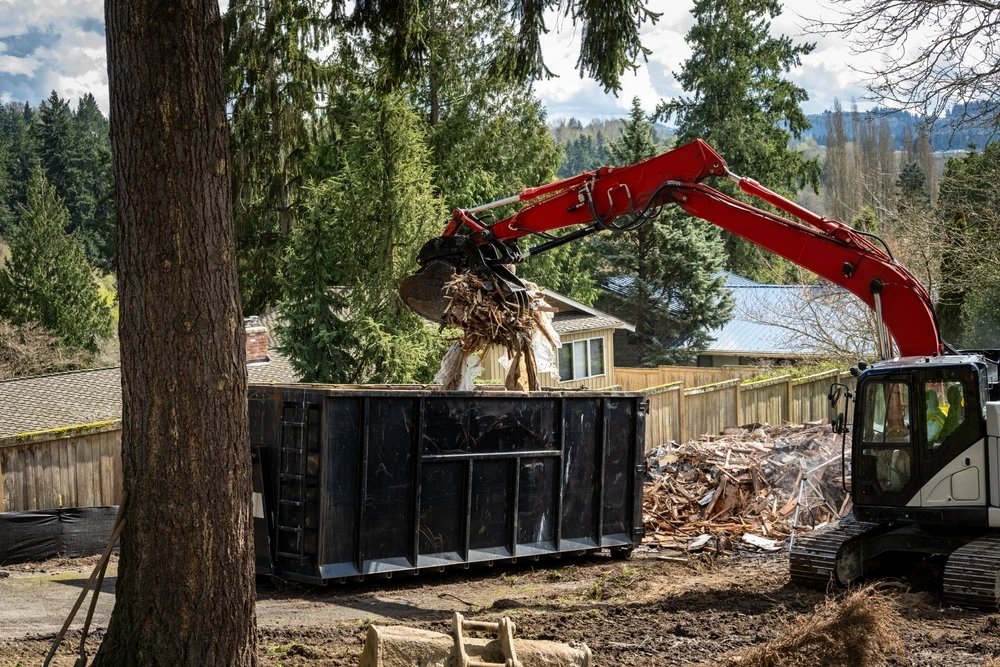As the leaves turn and the air cools, fall offers the perfect opportunity to revitalize your outdoor space. Tackling landscaping projects during this season can enhance your property’s beauty while preparing your garden for the colder months ahead. To make these projects manageable, a yard waste dumpster rental can efficiently handle the debris and maintain a tidy workspace.
From pruning shrubs to planting perennials, several fall landscaping projects can benefit significantly from renting a dumpster. Removing yard waste like branches, leaves, and clippings becomes hassle-free, allowing you more time to focus on creative landscaping ideas. By integrating these projects with waste management solutions, you ensure a clean and appealing outdoor space.
Incorporating sustainable practices like composting alongside major landscaping transformations helps enhance your yard’s health. Prioritizing strategic landscaping not only improves curb appeal but also contributes to a healthier ecosystem. Embracing these methods leads to a more organized and beautiful outdoor environment.
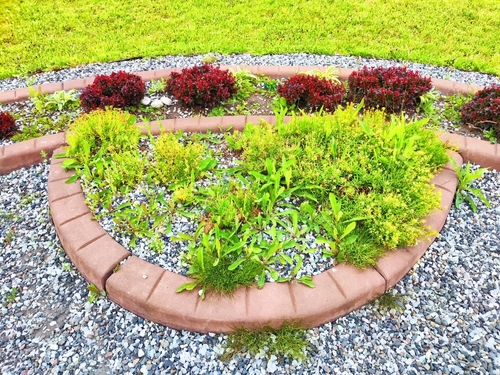 Boosting curb appeal through strategic landscaping can significantly enhance your property’s appearance and value. Focus on planting trees and perennials and utilizing mulching for both soil health and visual appeal.
Boosting curb appeal through strategic landscaping can significantly enhance your property’s appearance and value. Focus on planting trees and perennials and utilizing mulching for both soil health and visual appeal.
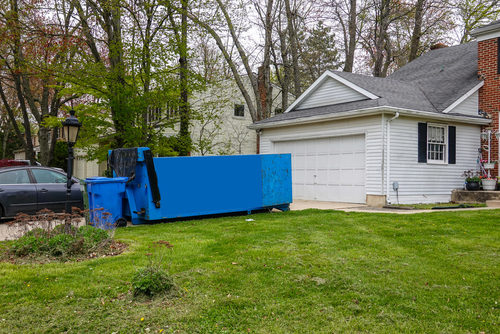 Choosing the right yard waste dumpster rental for your fall landscaping projects involves more than just selecting a container size. Understanding rental policies and effectively scheduling the usage are crucial steps to ensure a seamless experience, especially when dealing with yard waste disposal and home improvement tasks.
Choosing the right yard waste dumpster rental for your fall landscaping projects involves more than just selecting a container size. Understanding rental policies and effectively scheduling the usage are crucial steps to ensure a seamless experience, especially when dealing with yard waste disposal and home improvement tasks.
 Top 5 Fall Landscaping Projects That Benefit from a Yard Waste Dumpster Rental: Essential Tips for Homeowners
Top 5 Fall Landscaping Projects That Benefit from a Yard Waste Dumpster Rental: Essential Tips for Homeowners
Date: September 19 ,2024
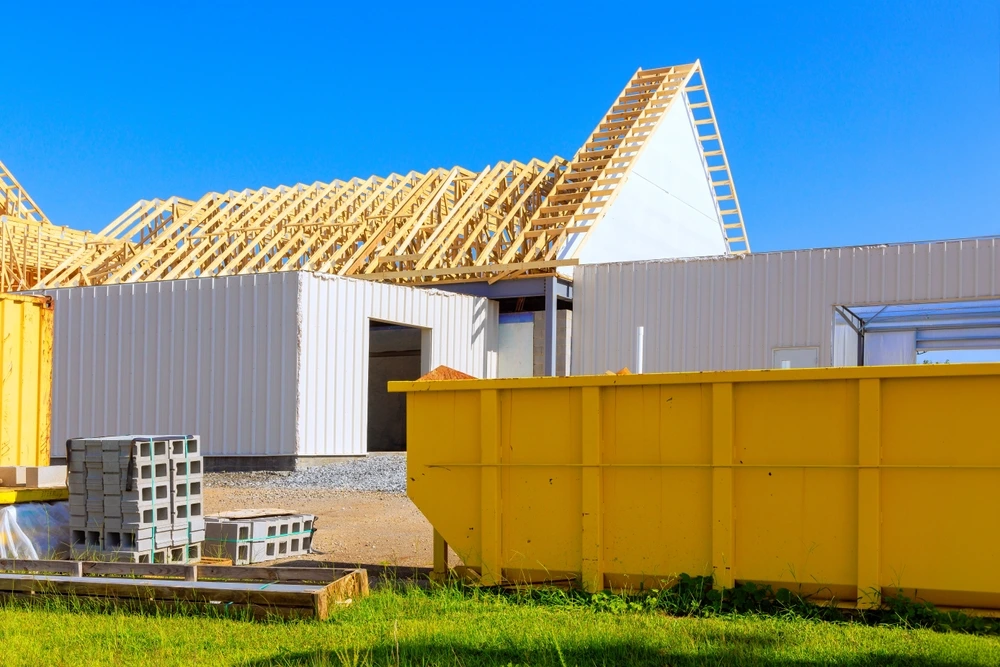 Beginner’s Guide to Dumpster Rentals: Essential Tips for Effective Waste Disposal
Beginner’s Guide to Dumpster Rentals: Essential Tips for Effective Waste Disposal
Date: September 18 ,2024
Key Takeaways
- A yard waste dumpster rental simplifies fall landscaping cleanup.
- Strategic landscaping enhances both aesthetics and sustainability.
- Combining major yard projects with waste solutions optimizes results.
Planning Your Fall Landscaping Projects
Efficiently planning your fall landscaping projects involves understanding your specific landscape needs and selecting an appropriately sized dumpster for yard waste. These projects often generate a considerable amount of yard waste, making proper disposal a key consideration.Assessing Your Landscape Needs
Start by evaluating your yard’s current condition and the specific improvements you want to achieve. Consider plant selection, soil type, and the maintenance required. Taking notes on areas needing attention, like overgrown shrubs or worn-out garden beds, will help streamline your planning process. Visiting resources on fall landscape ideas can provide inspiration on using plants like sumacs and winterberries that add visual interest. Determine the amount of yard waste your projects might produce. This includes branches, leaves, and any old landscaping materials you intend to replace or remove. A detailed assessment helps you make informed decisions on plant selections and project scope while ensuring successful planning and execution.Selecting the Right Dumpster Size for Yard Waste
Choosing the right dumpster size for disposing of yard waste is crucial. For minor projects like trimming shrubs and raking leaves, a smaller dumpster may suffice. A more extensive project, such as replanting a large garden or removing trees, might require a larger container. Consult with professionals in yard waste disposal to determine the best dumpster size for your project. They can provide insights based on your project’s dimensions and the types of waste involved. Efficiently managing yard waste with a properly sized dumpster ensures a smooth process and keeps your landscaping project organized, minimizing disruptions during your home improvement efforts. By disposing of waste responsibly, you contribute to a cleaner and more sustainable environment.Essential Fall Yard Cleanup and Maintenance
Fall is the ideal time for thorough yard maintenance. It’s crucial to remove debris and prepare your garden for the upcoming colder months. Key tasks include efficiently managing fallen leaves on your lawn and pruning any dead or damaged shrubs to maintain a healthy landscape.Raking Leaves and Lawn Care
Raking leaves is a vital part of fall yard cleanup as it prevents them from smothering your grass. A thick layer can block sunlight and create an environment for pests and diseases. Consider using a mulching mower to shred leaves into beneficial mulch for the lawn. Implementing regular lawn care now ensures your grass remains healthy, reducing the risk of snow mold and other diseases. Proper lawn maintenance includes aerating the soil to improve water and air penetration, which supports root growth. Feeding your lawn with a fall fertilizer can also promote strong root systems, setting a solid foundation for the spring. Cleaning up fallen leaves and maintaining grass health are essential steps to ensure your landscape thrives.Pruning and Removing Dead Shrubs
Pruning is essential to your yard cleanup routine. Trim damaged or dead branches to enhance airflow, which helps prevent plant diseases. This step is especially important before snow falls in colder climates, as it minimizes the risk of branches breaking under the weight. Removing dead shrubs not only improves aesthetics but also promotes overall plant health. When pruning, use clean, sharp tools to make precise cuts that heal quickly. Remove any shrubs affected by disease to prevent spreading. Proper pruning encourages plant growth and ensures that your landscape remains vibrant and healthy throughout the fall and winter months. Regular oversight and maintenance can transform your garden into a resilient and beautiful space.Enhancing Curb Appeal with Strategic Landscaping
 Boosting curb appeal through strategic landscaping can significantly enhance your property’s appearance and value. Focus on planting trees and perennials and utilizing mulching for both soil health and visual appeal.
Boosting curb appeal through strategic landscaping can significantly enhance your property’s appearance and value. Focus on planting trees and perennials and utilizing mulching for both soil health and visual appeal.
Planting Trees and Perennials
When you plant trees strategically, you can create natural focal points in your landscape. Choose species that thrive in your region and provide benefits such as shade or seasonal color. Trees like maples or oaks offer vibrant fall colors, while evergreens maintain greenery year-round. Perennials add lasting beauty with minimal yearly effort, returning each season. Select drought-resistant perennials for ease of maintenance. Varieties like black-eyed Susans or lavender bloom beautifully across seasons. Proper placement of trees and perennials can frame your home effectively, adding depth and interest to your landscape. Remember to consider sunlight and water needs when planning your layout, ensuring each plant thrives in its designated space.Mulching for Soil Health and Aesthetics
Mulching is essential for improving soil health and enhancing visual appeal. Organic mulch, such as wood chips or bark, enriches the soil as it breaks down while protecting plant roots from extreme temperatures. It helps retain moisture, reducing the need for frequent watering. Mulch also inhibits weed growth, saving you time and effort in garden maintenance. Applying a light layer of mulch around trees and perennials provides a neat, continuous appearance. Different textures and colors of mulch can match or contrast with your plants, creating an appealing landscape design. Ensure the mulch layer is not too thick, as excess can suffocate roots. Proper mulching can elevate your curb appeal and maintain your garden’s health efficiently.Sustainable Practices: Composting and Yard Waste Recycling
Adopting sustainable practices in your landscaping projects is crucial for effective waste management and environmental health. Learn how to create a compost bin and utilize organic matter in garden maintenance.Creating Your Own Compost Bin
Creating a compost bin is a practical way to recycle yard waste and organic matter. Select a location with good drainage and partial sunlight. Use a mix of brown materials like dry leaves and twigs, and green materials such as grass clippings and vegetable scraps. Keep the compost moist and turn it regularly to speed up decomposition. Building your own bin can be simple. You can repurpose materials like wooden pallets or use a commercial plastic bin. Ensure the design allows for easy aeration and access to the compost. Consider a three-bin system for managing compost in different stages of decomposition, which is often used in community composting.Utilizing Organic Matter in Garden Maintenance
Incorporating organic matter from composting into your garden helps improve soil health and supports plant growth. Spread a layer of finished compost over your garden beds to enrich the soil with nutrients. This practice enhances soil structure, boosts water retention, and supports beneficial microorganisms. When recycling yard waste, you can mulch leaves and trimmings to create a natural fertilizer. This approach reduces the need for chemical fertilizers and pesticides. Grasscycling, the process of leaving grass clippings on the lawn, is another effective method of returning nutrients to the soil. By implementing these strategies, you turn yard waste into valuable resources that promote a healthy, sustainable garden ecosystem.Final Considerations for Yard Waste Dumpster Rental
 Choosing the right yard waste dumpster rental for your fall landscaping projects involves more than just selecting a container size. Understanding rental policies and effectively scheduling the usage are crucial steps to ensure a seamless experience, especially when dealing with yard waste disposal and home improvement tasks.
Choosing the right yard waste dumpster rental for your fall landscaping projects involves more than just selecting a container size. Understanding rental policies and effectively scheduling the usage are crucial steps to ensure a seamless experience, especially when dealing with yard waste disposal and home improvement tasks.
Understanding Rental Policies and Restrictions
Before renting a dumpster, familiarize yourself with the policies and restrictions set by the rental company. Different companies might have unique rules regarding what can be disposed of. Yard waste like branches, leaves, and grass clippings are generally accepted, but there might be limitations on disposing of other materials like stones, dirt, or large stumps. Rental periods are another key factor. Some companies provide flexible options, while others might have stricter timelines. Knowing this ahead of time can save you from potential additional fees. Additionally, inquire about weight limits, as exceeding the designated weight can incur extra charges. By understanding these policies, you can plan your yard work and disposal more effectively.Scheduling and Maximizing Dumpster Usage
Scheduling your dumpster rental ahead of time is important, particularly during peak seasons like fall when demand is high. Contact the rental company well in advance to ensure availability for your preferred dates. This is crucial if your project involves extensive landscaping or home improvement tasks. To make the most of your rental, plan out the sequence of work. Start with the heaviest or bulkiest items, as these are often more challenging to maneuver later on. Consider using the space effectively by breaking down larger branches or compacting leaves. This strategy helps in maximizing the available space and ensures efficient yard waste disposal.Frequently Asked Questions
Renting a yard waste dumpster simplifies the cleanup process for fall landscaping projects, offering convenience and efficiency. Understanding the types of waste allowed, size options, and preparation tips can aid in maximizing its benefits.What types of yard waste can I dispose of in a rental dumpster after completing fall landscaping projects?
You can dispose of various types of yard waste such as leaves, branches, grass clippings, and shrub trimmings. It is important to ensure that these materials are organic and free of contaminants. This helps in maintaining an efficient waste management process.How does renting a dumpster facilitate cleanup for large-scale landscaping endeavors during the autumn season?
Renting a dumpster provides a centralized place to collect and deposit debris, which reduces the back-and-forth trips to disposal sites. It is especially beneficial for handling large volumes of waste generated by extensive fall landscaping tasks like leaf collection and tree pruning.Are there any restrictions on what I can put in a yard waste dumpster following a landscaping project?
Certain items like rocks, large tree stumps, and hazardous chemicals may be restricted from yard waste dumpsters. Always check with your rental service to confirm prohibited materials to avoid extra fees or penalties.What size of yard waste dumpster should I rent for a major fall landscaping makeover?
Selecting the right dumpster size depends on the scale of your project. Smaller projects might require a 10-yard dumpster, while extensive makeovers could necessitate a 20-yard dumpster or larger option. Assess your waste volume and consult with your provider for the best fit.Can I use a yard waste dumpster rental for both residential and commercial landscaping projects in the fall?
Yes, yard waste dumpsters can be utilized for both residential and commercial projects. They offer flexibility for different settings, accommodating varying amounts of debris efficiently. Be sure to specify the nature of your project when renting to ensure you get suitable service options.How do I properly prepare and load a dumpster for yard waste removal after finishing my landscaping project?
Prepare by breaking down large branches and compressing leaves as much as possible. Stack the debris neatly to maximize space. Avoid overfilling beyond the marked limits to ensure safe transportation. Proper loading techniques can enhance efficiency and minimize costs.RECENT BLOGS
 Top 5 Fall Landscaping Projects That Benefit from a Yard Waste Dumpster Rental: Essential Tips for Homeowners
Top 5 Fall Landscaping Projects That Benefit from a Yard Waste Dumpster Rental: Essential Tips for Homeowners
Date: September 19 ,2024
 Beginner’s Guide to Dumpster Rentals: Essential Tips for Effective Waste Disposal
Beginner’s Guide to Dumpster Rentals: Essential Tips for Effective Waste Disposal
Date: September 18 ,2024
Our Reviews
Mark Ramick
1725926374
Amber was awesome in helping me schedule the right dumpster for my job. Thanks again
Brian Healy
1725553543
Heather was so very pleasant, informative and charming. Next time… I will use you again.
Brandi Childers
1724853716
Ricardo helped me with my reservation. He made everything super clear and answered all my questions to help me pick the right dumpster to rent!
Steven Hewett
1724785537
Heather made the sales and scheduling experience extremely easy. Thank you for having great employees that care about conducting great business.
Jackson Vandiver
1724703158
Great service and fantastic customer service department. I would use them again.
LATEST BLOGS
